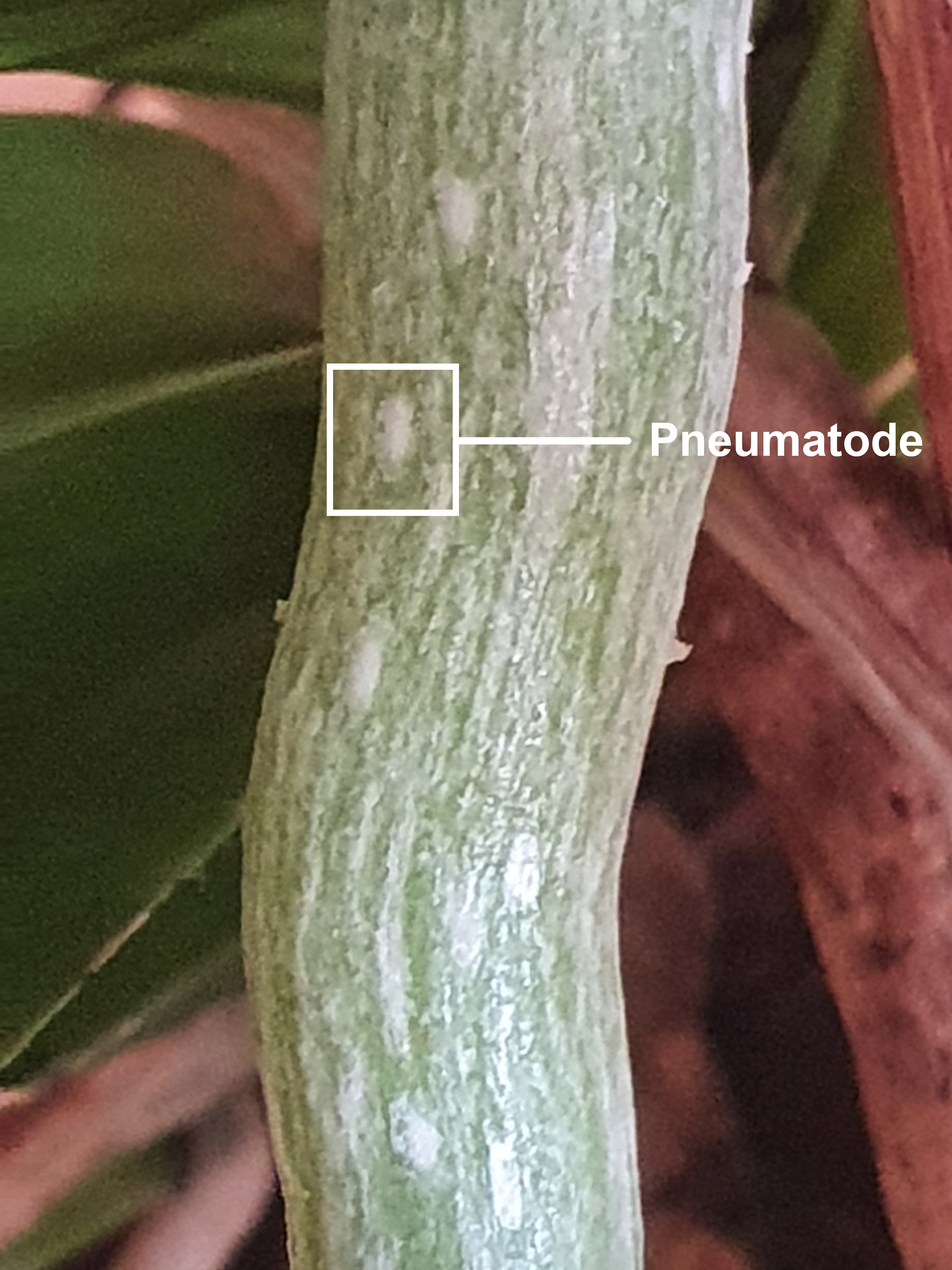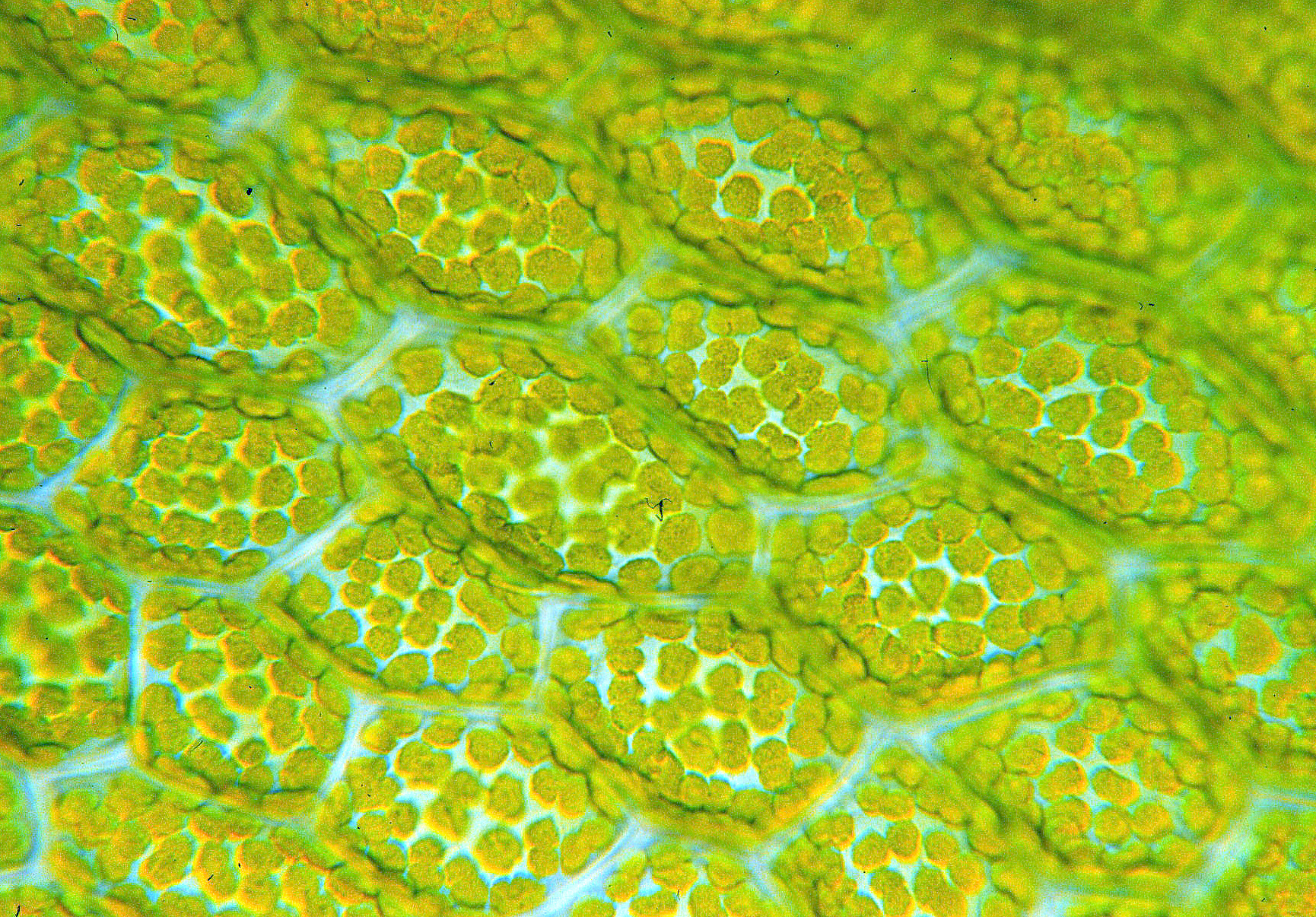|
Pneumatode
In botany, pneumatodes are air-containing structures in plant roots. Their function is to allow gaseous exchange in root tissues. This can be beneficial to semi-aquatic plants, such as neo-tropical palms. Plants with photosynthetic roots, such as epiphytic orchids like ''Dendrophylax lindenii'' also possess these structures. They play a role in fungal interactions. Etymology The name of the structure is derived from the Greek word πνεῦμα (pneûma), meaning breath and ὁδός (hodós), meaning pathway. Fungal interactions Fungal infections of plants may begin through penetration of the roots through pneumatodes. Functional analogy to stomata Pneumatodes are considered as a special type of cyclocytic stomata. The entire structure may rise above the adjacent epidermis. The pneumatodes may function as double structures for gas exchange and liquid water elimination (guttation). Leafless orchids with photosynthetic roots rely on the gas exchange through pneumatodes for phot ... [...More Info...] [...Related Items...] OR: [Wikipedia] [Google] [Baidu] |
Pneumatode
In botany, pneumatodes are air-containing structures in plant roots. Their function is to allow gaseous exchange in root tissues. This can be beneficial to semi-aquatic plants, such as neo-tropical palms. Plants with photosynthetic roots, such as epiphytic orchids like ''Dendrophylax lindenii'' also possess these structures. They play a role in fungal interactions. Etymology The name of the structure is derived from the Greek word πνεῦμα (pneûma), meaning breath and ὁδός (hodós), meaning pathway. Fungal interactions Fungal infections of plants may begin through penetration of the roots through pneumatodes. Functional analogy to stomata Pneumatodes are considered as a special type of cyclocytic stomata. The entire structure may rise above the adjacent epidermis. The pneumatodes may function as double structures for gas exchange and liquid water elimination (guttation). Leafless orchids with photosynthetic roots rely on the gas exchange through pneumatodes for phot ... [...More Info...] [...Related Items...] OR: [Wikipedia] [Google] [Baidu] |
Dendrophylax Lindenii
''Dendrophylax lindenii'', the ghost orchid (a common name also used for ''Epipogium aphyllum'') is a perennial epiphyte from the orchid family (Orchidaceae). It is native to Florida, the Bahamas, and Cuba. Other common names include palm polly and white frog orchid. Name The specific epithet "lindenii" is derived from its discoverer, the Belgian plant collector Jean Jules Linden, who saw this orchid for the first time in Cuba in 1844. Much later, it was also discovered in the Everglades in Florida. Biology ''Dendrophylax lindenii'' is a leafless epiphyte in the tribe Vandeae, in the subfamily Epidendroideae. The plant consists mainly of a network of photosynthetic roots on a tree trunk. Its habitat is moist, swampy forest in south-western Florida, and Caribbean islands such as Cuba. This orchid is exceptional among the monocots in that it consists of a greatly reduced stem, and its leaves have been reduced to scales. The flat, cord-like green roots constitute the bulk o ... [...More Info...] [...Related Items...] OR: [Wikipedia] [Google] [Baidu] |
Guttation
Guttation is the exudation of drops of xylem sap on the tips or edges of leaves of some vascular plants, such as grasses, and a number of fungi, which are not plants but were previously categorized as such and studied as part of botany. Guttation (from Latin ''gutta'' drop) is not to be confused with dew, which condenses from the atmosphere onto the plant or fungus surface and does not originate from within them. Guttation generally happens at night. Process At night, transpiration usually does not occur, because most plants have their stomata closed. When there is a high soil moisture level, water will enter plant roots, because the water potential of the roots is lower than in the soil solution. The water will accumulate in the plant, creating a slight root pressure. The root pressure forces some water to exude through special leaf tip or edge structures, hydathodes or water glands, forming drops. Root pressure provides the impetus for this flow, rather than transpirational ... [...More Info...] [...Related Items...] OR: [Wikipedia] [Google] [Baidu] |
Paleobotany
Paleobotany, which is also spelled as palaeobotany, is the branch of botany dealing with the recovery and identification of plant remains from geological contexts, and their use for the biological reconstruction of past environments (paleogeography), and the evolutionary history of plants, with a bearing upon the evolution of life in general. A synonym is paleophytology. It is a component of paleontology and paleobiology. The prefix ''palaeo-'' means "ancient, old", and is derived from the Greek adjective , . Paleobotany includes the study of terrestrial plant fossils, as well as the study of prehistoric marine photoautotrophs, such as photosynthetic algae, seaweeds or kelp. A closely related field is palynology, which is the study of fossilized and extant spores and pollen. Paleobotany is important in the reconstruction of ancient ecological systems and climate, known as paleoecology and paleoclimatology respectively; and is fundamental to the study of green plant developm ... [...More Info...] [...Related Items...] OR: [Wikipedia] [Google] [Baidu] |
Plant Anatomy
Plant anatomy or phytotomy is the general term for the study of the internal structure of plants. Originally it included plant morphology, the description of the physical form and external structure of plants, but since the mid-20th century plant anatomy has been considered a separate field referring only to internal plant structure. Plant anatomy is now frequently investigated at the cellular level, and often involves the sectioning of tissues and microscopy. Structural divisions Some studies of plant anatomy use a systems approach, organized on the basis of the plant's activities, such as nutrient transport, flowering, pollination, embryogenesis or seed development. Others are more classically divided into the following structural categories: : Flower anatomy, including study of the Calyx, Corolla, Androecium, and Gynoecium : Leaf anatomy, including study of the Epidermis, stomata and Palisade cells : Stem anatomy, including Stem structure and vascular tissues, buds ... [...More Info...] [...Related Items...] OR: [Wikipedia] [Google] [Baidu] |
Plant Physiology
Plant physiology is a subdiscipline of botany concerned with the functioning, or physiology, of plants. Closely related fields include plant morphology (structure of plants), plant ecology (interactions with the environment), phytochemistry (biochemistry of plants), cell biology, genetics, biophysics and molecular biology. Fundamental processes such as photosynthesis, respiration, plant nutrition, plant hormone functions, tropisms, nastic movements, photoperiodism, photomorphogenesis, circadian rhythms, environmental stress physiology, seed germination, dormancy and stomata function and transpiration, both parts of plant water relations, are studied by plant physiologists. Aims The field of plant physiology includes the study of all the internal activities of plants—those chemical and physical processes associated with life as they occur in plants. This includes study at many levels of scale of size and time. At the smallest scale are molecular interactions of photosynthesi ... [...More Info...] [...Related Items...] OR: [Wikipedia] [Google] [Baidu] |



